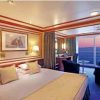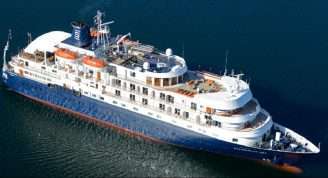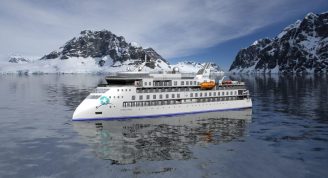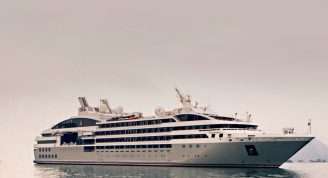Description
Step back in time on a voyage into Japan’s riveting history, from the historic castle towns of the Edo period to the elegant shrines and merchant districts of the Meiji era, to the poignant sites of World War II. As we trace the shores of Honshu and the islands of the Seto Inland Sea aboard the National Geographic Orion, venture into the homes of samurai and feudal lords and discover exquisite centuries-old gardens and temples. Take a detour to South Korea to spend a day exploring the ancient city of Gyeongju; and explore Japanese artistic traditions of the past and present.
Trip Name
Coastal Japan: Imperial Dynasties and Modern Culture
Days
16
Overview
Vessel Type: Luxury Expedition
Length: 103 metres
Passenger Capacity: 102 (in 53 cabins)
Built: 2003 / Refurbished 2014
Engineered for maximum comfort and safety, Orion is equipped with the latest technology including large retractable stabilizers, sonar, radar, and an ice-strengthened hull. A shallow draft plus bow and stern thrusters provide the convenience of being able to maneuver close to shore. 14 Zodiacs ensure quick disembarkation and offer the ideal transport for up-close exploration.
National Geographic Orion meets strict specifications for environmental protection and the on board waste management systems meet the stringent Antarctic operational standards enabling us to travel to the most pristine environments. A host of advanced design features and technology ensures sustainable marine environmental practices.
National Geographic Orion accommodates 102 guests in 53 cabins, including several with balconies. She is spacious and modern, with a variety of public rooms that offer panoramic views of the passing landscape. Friendly and informal, Orion fosters a welcoming atmosphere where like-minded guests share in exceptional experiences and enrichment.
Her public rooms include a dramatic window-lined main lounge, as well as an observation lounge and library perched at the very top of the ship, with plentiful observation decks. The spacious lounge is the heart of our expedition community, and is suited for spirited cocktail hours, informative presentations and our nightly tradition of Recap. In addition, a dedicated theater provides a unique setting for specialist presentations or films and slideshows. Both the main dining room and outside buffet easily accommodate all guests at once for open seating dining. On selected nights, weather permitting, our dining room menu is also available on the outside deck.
While Orion interiors are elegant, life aboard is always casual, with no need for formal clothing. And you’ll find shipboard services like laundry, in-room cabled internet, and public-area wifi.


















